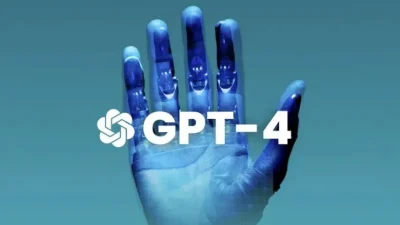OpenAI’s GPT-4 API provides developers with the ability to integrate state-of-the-art natural language processing into their applications. This guide outlines the step-by-step process to connect and configure GPT-4 through its API. By following this guide, you can unlock the potential of GPT-4 for customer support, content generation, chatbots, and more.

Understanding the Basics of the GPT-4 API
Before diving into the setup process, it’s crucial to understand the foundational aspects of the GPT-4 API. The API enables applications to send requests to OpenAI’s servers and receive responses based on the model’s capabilities. Here’s a breakdown of key elements:
- API Key. A unique identifier provided by OpenAI to authenticate and authorize requests.
- Rate Limits. The maximum number of requests you can send per minute or day.
- Pricing. Costs associated with API usage depend on the number of tokens (words and characters) processed.
- Tokenization. GPT-4 processes text in tokens; understanding token limits is essential for efficient API use.
Step 1: Getting Access to the GPT-4 API
To start using the GPT-4 API, you must first sign up for an OpenAI account and obtain API access. Follow these steps:
- Sign Up. Visit OpenAI’s website and create an account.
- Subscribe to a Plan. Choose an API plan that suits your needs. OpenAI offers flexible pricing based on usage.
- Access Your API Key. Navigate to your account dashboard and generate an API key. Keep this key secure, as it grants access to your GPT-4 API.
Key Components of OpenAI API Plans
| Plan Name | Monthly Fee | Token Limit | Rate Limit |
|---|---|---|---|
| Free Tier | $0 | 20,000 | 60 requests/min |
| Basic Plan | $10 | 100,000 | 120 requests/min |
| Premium Plan | $100 | Unlimited | 600 requests/min |
Step 2: Setting Up the Development Environment
To effectively use the GPT-4 API, you need a development environment where you can make API calls. This step involves:
Installing Necessary Tools
- Postman or Curl: For testing API requests.
- Programming Environment: Use languages such as Python, JavaScript, or any language capable of sending HTTP requests.
Configuring Access
- Ensure your development environment has internet access.
- Store your API key securely using environment variables or a secure vault.
- Test connectivity by sending a simple request to OpenAI’s endpoint.
API Endpoints
GPT-4 uses endpoints to handle requests. The standard endpoint for most interactions is https://api.openai.com/v1/completions.
Step 3: Understanding API Parameters
When making requests to the GPT-4 API, you’ll need to configure specific parameters to get the desired response. These include:
- Model: Specifies the model version, such as
gpt-4. - Prompt: The text input provided to GPT-4 for processing.
- Max Tokens: Limits the length of the response.
- Temperature: Controls the randomness of the output; higher values make responses more creative.
- Top-p: Another parameter for controlling output variability.
Common API Parameters
| Parameter | Description | Example Value |
| Model | Specifies the version of GPT | gpt-4 |
| Prompt | Input text for the model | “Write a poem” |
| Max Tokens | Sets the maximum length of the response | 500 |
| Temperature | Controls randomness in output (0 to 1) | 0.7 |
| Top-p | Alternative to temperature for controlling output | 0.9 |
Step 4: Testing Your First API Call
Before deploying GPT-4 in your application, test the API using tools like Postman or Curl. Here’s how:
- Set the Endpoint: Use
https://api.openai.com/v1/completions. - Add Headers:
Authorization: Bearer [your_api_key]Content-Type: application/json
- Body Parameters: Include your model, prompt, and desired settings.
- Send the Request: Observe the response and ensure it meets expectations.
Step 5: Managing API Usage and Costs
Efficiently managing your API usage ensures you stay within your budget while maximizing GPT-4’s potential. Consider the following:
Monitor Usage
OpenAI’s dashboard provides real-time analytics, including token usage and cost breakdowns. Regularly check these metrics to identify trends and optimize usage.
Optimize Prompts
Shorten prompts or make them more specific to reduce token consumption. For instance:
- Instead of: “Please provide a detailed analysis of climate change effects in 2025.”
- Use: “Summarize climate change impacts expected in 2025.”
Implement Rate Limiting
Set up safeguards in your application to avoid exceeding API rate limits.
Step 6: Integrating GPT-4 into Applications
To fully leverage GPT-4, you’ll need to integrate it into your application. Key considerations include:
Choosing the Right Use Case
Identify where GPT-4 adds value, such as:
- Automating customer support.
- Generating marketing content.
- Creating intelligent chatbots.
Backend Integration
Use your chosen programming language to create functions that interact with the GPT-4 API. Ensure proper error handling and logging to maintain stability.
Frontend Implementation
Design a user-friendly interface where end-users can interact with GPT-4-driven features. For example:
- A chatbot interface.
- A content generation panel.
Challenges and Best Practices
Common Challenges
- Overuse of Tokens. Excessive token usage can increase costs. Optimize prompts and responses.
- Rate Limiting. High traffic may hit API limits. Plan for this by queuing requests.
- Error Handling. Manage cases where the API returns errors due to invalid parameters or service downtime.
Best Practices
- Use Environment Variables. Protect API keys.
- Set Default Parameters. Ensure consistent responses.
- Regular Updates. Stay informed about changes in API versions and features.
Conclusion
Integrating GPT-4 through its API unlocks powerful possibilities for enhancing applications. By following this step-by-step guide, developers can successfully set up, test, and deploy GPT-4-driven solutions while managing costs and maximizing performance.





